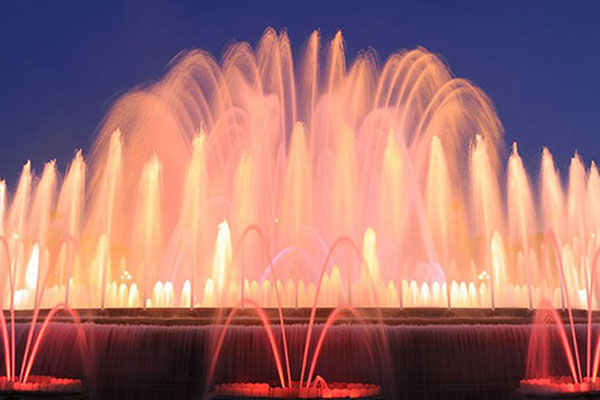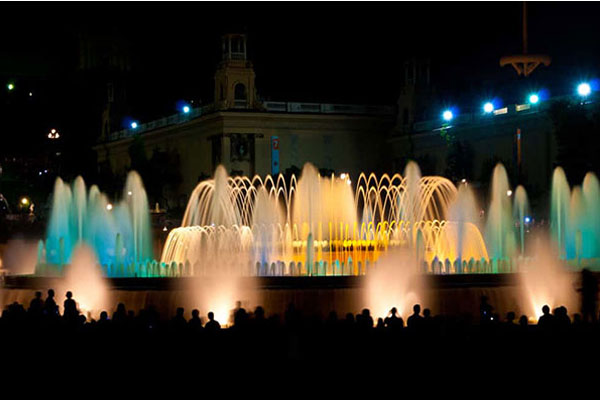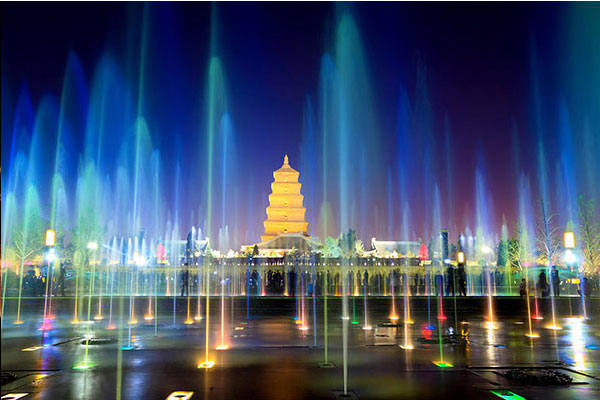15 Jan 2020
Such as streams, waterfalls, artificial lakes, fishponds, springs, and falling water, etc. In traditional traditional gardens, water landscapes can be broadly divided into two categories: one is the use of terrain or civil structures, imitating natural water landscape . There are applications for buildings. The second is the completely identical musical fountain landscaping. Various fountains such as music fountains, program-controlled fountains, dry land fountains, atomized fountains etc.
1.Classification of water landscapes
In general, water landscapes can be divided into two categories: one is the use of terrain or civil structures, which are modeled after natural water landscapes. Such as streams, waterfalls, artificial lakes, fishponds, springs, and falling water, etc., these have many applications in our traditional gardens. The second is to rely entirely on fountain equipment for landscaping. Various fountains such as music fountains, program-controlled fountains, dry land fountains, atomized fountains, etc.
2.Elements of Waterscape Project Various waterscape projects are generally composed of the following aspects: civil pools, pipeline valve systems, power pump systems, lighting systems, etc. Larger water bodies or places with high requirements on water quality must also have a water quality treatment system.

3.The main points of waterscape design
1) Overall modeling design The overall modeling design should first analyze the basic requirements of the environmental atmosphere, then analyze the various waterscape forms, list different combinations, draw the effect map, and choose the best.
Waterscape forms include still water, flowing water, falling water, and water spray. These forms can generate colorful and varied forms, and different landscape forms are suitable for different application scenarios. For example, music fountains are generally suitable for assembly places such as squares. It uses the organic combination of music, water, and lights to give people visual and auditory aesthetics; at the same time, the fountain and the square merge into one, forming a part of the building. The buildings in the residential area are more suitable for designing a stream to reflect the quiet and relaxed atmosphere, giving people a smooth and relaxing visual enjoyment, thereby creating a pleasant living rest space.
2) Selection of nozzles in fountain design Various types of nozzles are widely used in water features to generate water shapes with different shapes. The biggest requirement of the water landscape project for the sprinkler is beautiful water shape and smooth and stable jet. In actual use, attention should be paid to the characteristics of various nozzles. Generally, the water film nozzle has poor wind resistance, and it is not suitable for outdoor windy occasions; while the jet suction nozzle such as cedar or gushing spring is more sensitive to water level changes. When using it, pay attention not only to the water level change, but also to the pool design There are corresponding measures to suppress the wave. Such as the installation of a longer overflow weir or underwater wave wall. However, it is also conducive to the hydraulic phenomenon of wave resonance to build a pulsating fountain. The regular wave surge causes the water jet to jump regularly and change its height. There are also many high-tech fountain equipments that can also be used in water landscapes. The jets of Guangquan and Jump Springs are very smooth and stable. They look like glass rods and can accurately fall into the water hole. The springs can be controlled by the computer to generate water jets of variable length. Smooth water polo. They are all very interesting and memorable. The various high-tech nozzles used in large-scale musical fountains and the various high-tech nozzles and underwater sports machinery and control components used in underwater-type music fountains are also wide-ranging and can be widely selected.

The depth of common landscape ponds in civil pool design is generally 0.6 ~ 0.8m. The reason for this is to ensure the submersion depth of the suction port, and the bottom of the pool is a whole plane, which is also convenient for the installation and maintenance of pipeline equipment in the pool. Suction pits or pump pits are only used when designing shallow butterfly pools that reflect hydrophilic characteristics. In fact, the water depth of 0.6 ~ 0.8m is relatively unsafe. Similarly, in the design of children's paddling pools, the depth generally used is about 0.3 to 0.6m, and it will be very dangerous for young children to fall into the landscape pool. We think the more suitable water depth is 0.2 ~ 0.4m. Another advantage of this is that when the water turbidity is slightly higher, it still feels clear to the bottom. The top surface of the pool wall should be available for visitors to sit down and rest. The height of the top surface of the pool wall from the ground is generally 0.30 ~ 0.45m. Except for artificial lakes, the water surface should be higher than the ground. If the water level is low, you will feel like being near a deep pond. From the perspective of hydrophilicity, a more suitable scale is that the water surface is 0.2m from the top of the pool wall. Submerged pump pits or pump suction inlets only need to be partially deepened to meet the water absorption conditions. The surface of the pump pit can be provided with rafters, which can shield the equipment and can also serve as a grill to prevent the inhalation of large particles of impurities. From an aesthetic point of view, the surface of the pool should minimize exposed pipe equipment, especially the overflow nozzle installed vertically, which will produce a large drainage and suction sound when the water surface rises.
3) Pipe material selection Earlier projects generally used hot-dip galvanized steel pipes, but there are many shortcomings. After being used for a period of time, the surface of the steel pipe is corroded, which affects the appearance and the service life is more than double that of the concrete structure. The better pipes are copper pipes and stainless steel pipes, but the cost is higher. UPVC pipe can avoid rust, but it has the problems of poor weather resistance and accelerated light discoloration and aging due to direct light irradiation. If it is buried under the floor of the pool (in the north, pay attention to the slope and the vent valve at the low end, drainage and freezing in winter), and use copper or stainless steel pipes in the exposed part should be a more reasonable and economical solution. According to the manufacturer, the service life of UPVC pipes can reach 50 years without direct sunlight.
4)Selection of pump form Many waterscape projects currently use submersible pumps that do not require a pump room as hydraulic lifting equipment in order to save building area or reduce construction costs. Therefore, the development of high reliability submersible pumps is a key to reducing the cost of waterscape projects. In terms of maintenance conditions, centrifugal pumps also have unparalleled advantages.

Keywords: musical fountain
Originally published 15 Jan 2020, updated 15 Jan 2020.